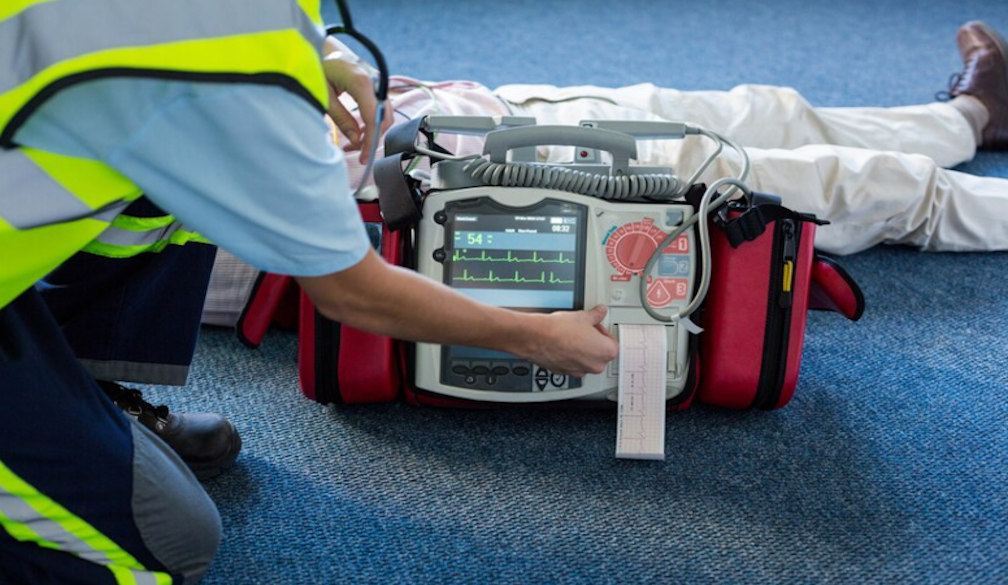Versatile Uses of Defibrillators: Lifesaving Aid for Multiple Scenarios
- Written by The Times

"Explore the various uses of defibrillators💔⚡! Learn how this lifesaving tool aids in multiple scenarios and saves countless lives👨⚕️🚑🏥.".
Defibrillators are essential tools in emergencies, capable of restoring life-saving heart rhythms in critical moments. Understanding their importance and diverse applications is crucial for immediate life-saving interventions and fostering awareness about human health, ecological interdependence, and the value of proactive conservation measures. By expanding our understanding of defibrillators, we promote medical safety and a broader commitment to sustainable practices that protect human lives and the environment.
Key Features of Defibrillators
Defibrillators are advanced medical devices that deliver controlled electrical shocks to the heart. These shocks can restore normal heart rhythm, making them indispensable in treating cardiac arrest. If you're looking for a defib for sale, it's essential to ensure you choose a reliable model that suits your needs. Quick and effective use can significantly increase survival chances in cases of sudden cardiac arrest, which remains one of the leading causes of death worldwide.
Defibrillators come in various forms, each tailored to specific medical needs, environments, and user capabilities. Their features highlight their versatility and life-saving power, emphasising their crucial role in healthcare and emergency response.
Science and Working Mechanism of Defibrillators
The core function of defibrillators is to correct irregular heart rhythms by delivering electric shocks. Cardiac arrest occurs when the heart experiences abnormal electrical activity, causing the heart to stop pumping blood effectively. Defibrillators analyse the heart's electrical patterns and deliver the necessary shock to restore normal rhythm, either synchronising with the heart's activity or through an asynchronous pulse when required.
Modern defibrillators feature sophisticated algorithms that distinguish between dangerous arrhythmias and less serious irregularities, ensuring that shocks are only delivered when necessary.
Multiple Uses of Defibrillators
Defibrillators are employed in various settings, ranging from healthcare facilities to public spaces, emphasising their broad utility across different scenarios:
Emergency Responder Role: Defibrillators are crucial for first responders, such as paramedics, who use them in ambulances or on-site to treat cardiac arrest.
Public Access Defibrillation: Many public spaces now have Automated External Defibrillators (AEDs) accessible to anyone. This is part of a broader movement to train ordinary citizens in basic life support, increasing the likelihood of survival in emergencies.
Athletic and Sports Events: Given the physical exertion athletes experience, sudden cardiac arrest can occur unexpectedly. AEDs are commonly used at sporting events and training facilities to intervene in emergencies quickly.
At-Risk Populations: For individuals with known heart conditions, wearable defibrillators provide continuous monitoring and the possibility of a life-saving shock in the event of a dangerous arrhythmia, offering peace of mind to those with a high risk of cardiac arrest.
Different Types of Defibrillators
There are various types of defibrillators designed for different needs and levels of training:
Manual External Defibrillators: These require trained medical professionals to operate. Used primarily in hospitals and by emergency medical teams, these devices allow healthcare workers to control the timing and intensity of shocks, ensuring optimal care in life-threatening situations.
Automated External Defibrillators (AEDs): AEDs are user-friendly and designed for use by laypeople with minimal training. They assess the patient's heart rhythm, decide whether a shock is necessary, and guide the user through the process with clear, audible instructions.
Implantable Cardioverter-Defibrillators (ICDs): These tiny devices are implanted in patients with a high risk of cardiac arrest. They constantly monitor the heart's rhythm and deliver a shock if they detect a dangerous arrhythmia, preventing sudden cardiac death.
Wearable Cardiac Defibrillators: A more flexible option for patients who need continuous monitoring. These devices can be worn on the body, providing 24/7 protection from sudden cardiac events. If the device detects an abnormal rhythm, it delivers a shock to restore normal function.
Factors to Consider When Using a Defibrillator
Using a defibrillator effectively requires a keen understanding of the situation and quick decision-making. Key factors to consider include:
Reading and Understanding the Situation Correctly: It’s critical to quickly assess the scenario and understand the seriousness of the condition. Correctly identifying a cardiac emergency is essential to ensuring the right action is taken.
Importance of Rapid and Accurate Response: In medical emergencies, every second counts. The faster the response, the greater the chance of survival. Defibrillators help save lives but must be used correctly and swiftly to maximise their life-saving potential.
Future Innovations in DefibrillatorsInnovation in the field of defibrillators is ongoing. Recent developments include:
Improved Portability: Modern defibrillators are becoming more compact and lightweight, ensuring they are more accessible in various environments, from public spaces to remote locations.
Automated Analysis: Newer models have advanced algorithms that improve diagnostic accuracy and ensure that shocks are delivered more precisely.
Enhanced Connectivity: Integration with healthcare systems enables defibrillators to transmit data in real-time to medical teams, providing valuable information for follow-up care and patient management.
Conclusion
Defibrillators are a versatile and critical part of modern emergency medical care. From public spaces to hospitals, these life-saving devices help restore normal heart rhythms, enhancing survival rates and improving health outcomes. As technology advances, the role of defibrillators will continue to grow, with innovations aimed at improving portability, connectivity, and ease of use. Understanding defibrillators' features, types, and functions is essential for medical professionals and the general public to be prepared for cardiac emergencies, ultimately helping save lives.













